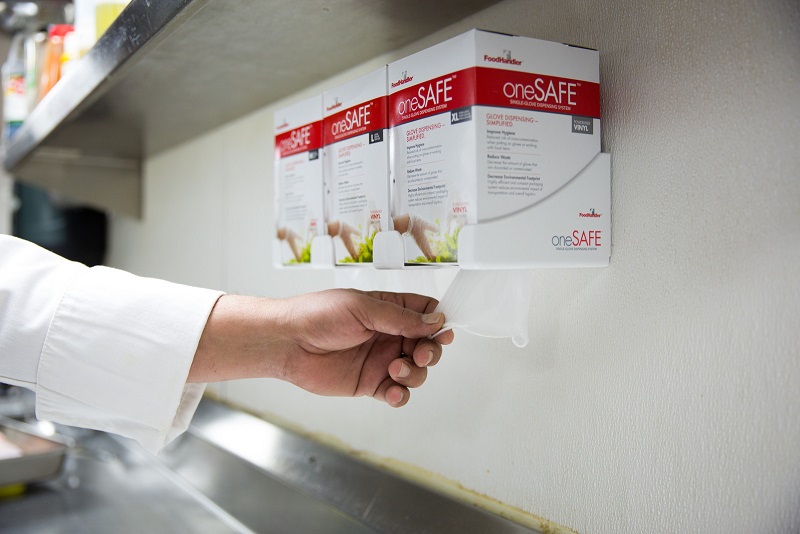How Effective is Your Food Safety Training?
 Basic food safety in a restaurant kitchen is not rocket science, but critically important for the crew to take the time to learn about it and for managers to set the example each day. Customers never expect or want to see a manager, chef, or a crew member make a very visible food safety mistake, like not washing hands before food prep and gloving, or touching their face or hair while prepping or handling food. Have we all seen it happen in our restaurant or as a customer elsewhere? Certainly. Are you using some creativity in your current training methods to help your staff “get it” so to speak, and reflect positive behaviors regarding food safety?
Basic food safety in a restaurant kitchen is not rocket science, but critically important for the crew to take the time to learn about it and for managers to set the example each day. Customers never expect or want to see a manager, chef, or a crew member make a very visible food safety mistake, like not washing hands before food prep and gloving, or touching their face or hair while prepping or handling food. Have we all seen it happen in our restaurant or as a customer elsewhere? Certainly. Are you using some creativity in your current training methods to help your staff “get it” so to speak, and reflect positive behaviors regarding food safety?
Effective food safety programs tap the psychology of how people learn and make the education fun. Your well thought out training methods might also help reduce the employee turnover. Illustrate your points to the crew with real life examples from your experience and use humor. You can even use past mistakes to make a point. Food safety knowledge is such an important factor to a restaurant’s success, but think of the old simple adage about learning:
TELL ME > I’LL FORGET;
SHOW ME > I’LL REMEMBER;
INVOLVE ME > I’LL UNDERSTAND.
For each basic concept in food safety, teach the crew “who, what, where, why, and when”. Sometimes managers stop at the “show me” step and don’t take the time to involve the veteran crew along with a new crew member—particularly on the most simple food safety concepts like portioning, handwashing, when to use gloves, how to clean a piece of equipment, using a thermometer and learning what are the correct temperatures. Use colorful signage, online basic training, videos, or workbooks to read, but don’t stop there.
Positive Reinforcement — Have you done a fun verbal quiz lately with your crew about what are the correct temperatures for your foods? Do YOU know them and are they posted in the prep area? Positive reinforcement affects behaviors the most, even though behavioral changes are difficult. Rewards/recognition for any training is needed with ongoing participation by management and employees. Examples & key tips:
- REMEMBER – You get ALOT more with sugar than a baseball bat…
- Any kind of recognition & daily—become watchful to catch the good actions
- Team building skills are needed in food service—the veterans need reinforcement too
- Mention of their good practices on a colorful bulletin board
- Newsletter mention or local newspaper article about training of group
- Certificates of training or a “leader” job title
- Ask the local health department for training assistance—usually it’s free & onsite
- Monetary rewards, movie passes, or any kind of incentives if possible
- THANK YOUS! They’re A Biggie!!
Bottom Line: There are plenty of options out there for manager certification and crew level training that is well worth the cost. Check out new online options to save time and dollars. Most employees are not computer-phobic with a little help from their management. The crew needs direct involvement in the food safety learning process – NOT JUST DO AS I SAY. Think a bit like a customer and then, do even more to make that customer notice good food safety practices through the actions of your well trained crew!
***
About the Author: Lacie Thrall

This information is provided as a general guideline and is not intended to be, nor does it, constitute legal or regulatory advice. Additional Federal regulations may apply to your particular circumstances. State, regional and local laws, ordinances and regulations may also apply.
READ MORE POSTS
The Basic Principles of Food Safety
Every food establishment uses, processes, and sells food in different ways. However, the general issues and key principles of food safety remain the same, whatever the style of the operation. All food safety training programs should contain the “big 3” factors that could cause food to become unsafe. Food must be kept out of harms way from human errors, but if you don’t train food workers what they are, they won’t know why these factors are so important to your operation. The basics can make us or break us in one or maybe two food handling mistakes.
Be Aware When You Prepare – Food Prep Tips
The subject of food preparation covers some very broad, basic principles within food safety, with many steps associated with “risk” in some recipes. Certainly, preparation steps are where the most mistakes have occurred if a foodborne illness should occur. Outbreaks usually happen when more than one mistake occurs during prep, but sometimes it only takes one. Cooking is the biggest risk for raw foods, but all foods become ready-to-eat foods at some point in final preparation steps and that’s where the most care is required.
Food Gloves & Latex Allergy Education
Politicians joke about the endless stretch of rubber chicken dinners they may consume in an election year. For people with a latex allergy, such a prospect may be no laughing matter. While latex serves as an effective barrier glove material and has the best fit because of its elasticity, the risks associated should not be ignored. The solution is not simple and many options are available for operators today. It should always be mentioned that handwashing (before putting on gloves) is always the primary barrier to contamination and gloves are considered a good secondary barrier.
Foodborne Illness Myths & Facts
“It must have been something I ate.” That’s the typical statement when a person develops some relatively minor symptoms from food. Maybe not severe enough to go to the doctor so you choose to tough it out without medical care. Sudden onset of flu-like symptoms such as onset of stomach cramps, diarrhea, vomiting and fever could possibly mean you are the victim of a foodborne illness. The illness is sometimes referred to as “food poisoning”, but it’s often misdiagnosed.










